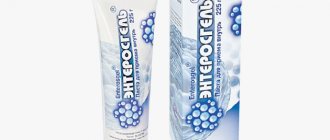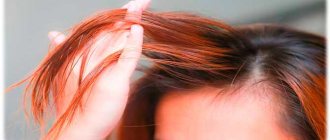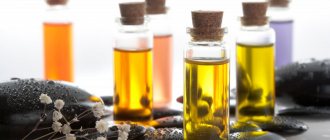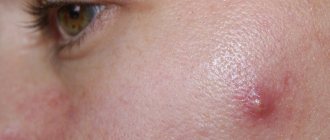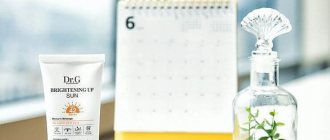A friend went to the salon for an acid peel and looks like a millionaire. A work colleague is delighted with the new acid serum. And an “acid boom” just happened on all the forums. It seems that the entire beauty world has turned upside down and only you are afraid to start using popular new products. What if the skin reacts badly? But knowledge is power! Today we will sort all the acids into categories: who needs them, why, and how to choose products with active ingredients that are right for you.
Every skin type needs oils in cosmetics!
Absolutely any skin type needs oils, including oily skin! If dry skin receives hydration, protection and starts the renewal process from oils, then oily skin compensates for the lack of linoleic acid, leading to chronic inflammation, acne and dermatitis!
Our skin consists of a lipid barrier , which is based on triglycerides of fatty acids and other lipophilic components (ceramides, cholesterols, etc.). In healthy skin, triglycerides are in optimal balance; they form the barrier layer and are responsible for restoring cell membranes of the lipid layer and protecting it.
Healthy skin contains an optimal ratio of fatty acids.
What happens if, as we age, the skin stops producing certain fatty acids or their balance is disrupted?
The skin becomes dry or dehydrated, its protective barrier is broken and holes form through which moisture quickly evaporates and germs and allergens penetrate. And the more we start smearing ourselves with expensive Vaseline creams, the more we aggravate the problems.
The skin needs only one thing - to replenish the lack of fatty acids and restore the damaged barrier!
Just remember this and let's move on. Oils are unique in that, on the one hand, they are emollients, and on the other, they participate in the nutrition of the skin and affect all its processes. That is, oils are the real active ingredients in cosmetics!
Pharmacy peelings
The pharmaceutical industry produces many drugs that are used for high-quality cleansing of the epidermis. Several types of acid peels are used more often than others.
Badyaga
- A natural product with a complex effect: removes sebaceous grease and dirt from clogged pores, normalizes metabolic processes, dries the epidermis.
- Peeling with badyaga reduces pigmentation and the number of acne.
- The simplest recipe: combine natural powder with warm water to form a thick paste.
- Apply the mixture to the face, do not treat the area under the eyes. Don't rub! After a quarter of an hour, wash with lukewarm water.
- Adding honey (for 1 tablespoon of badyagi powder - 1 teaspoon of bee product) turns an ordinary mask into an anti-aging one with antioxidant properties.
Calcium chloride
Algorithm of actions:
- create foam from baby soap;
- pour the contents of the ampoule (calcium chloride, 5%) into a glass or porcelain container;
- dip your fingers into soap suds, then into a bowl of medicine;
- treat the face with gentle movements, certainly along the massage lines;
- After five minutes, wash with cool water or chamomile decoction.
Boric alcohol
If you have blackheads, this acid peeling for the face will help, the main component of which can be bought at the pharmacy. It is prepared like this:
- In a non-metallic bowl, combine a couple of tablespoons of chopped oatmeal, 1/2 tsp. soda, 4 drops of boric alcohol, a little kefir (fat content - 2.5%);
- lubricate the area under the eyes with nourishing cream;
- Apply the multicomponent mixture to the face (do not rub);
- wait 20 minutes, remove the composition, wash with cold water.
Gel Curiosin
There are mixed opinions about this drug. Dermatologists do not recommend making a mask with Curiosin, but cosmetologists often recommend the procedure due to the content of zinc hyaluronate.
Acid mask with Curiosin for wrinkles:
- rub in a small amount of the drug;
- after two minutes, apply a light cream from the “Intensive Moisturizing” series;
- After half an hour, wipe your face and wash with lukewarm water.
Blefarogel
One of the most effective pharmaceutical facial peels smooths out fine wrinkles around the eyes, relieves puffiness, and reduces discomfort and redness in the eyelid area.
Blepharogel contains aloe vera, a rejuvenating component - hyaluronic acid, glycerin and is more suitable for regeneration and moisturizing than for acid peeling.
A small amount is applied in the area around the eyes, frequency of use is 2 or 3 times a week.
How do carrier oils work on the skin?
1. They are used as emollients, that is, they cover the skin with a blanket and create a barrier that prevents damage to the top layer of skin. This barrier serves as protection for the skin and gives it the time it needs to recover. Moreover, unlike mineral oils, they do not create a greenhouse film that makes it difficult for the skin to breathe and causes harm.
That is, oils prevent moisture loss from the skin using physiological methods .
2. Oils fill the spaces between dead skin cells and make the surface smooth. By increasing the adhesive force, they give a flatter shape to the curved edges of individual scales. This results in the skin becoming softer, smoother, without roughness, and therefore has a greater ability to reflect light. At the same time, the skin's protective barrier is strengthened and skin looseness is removed.
Oils smooth the surface of the skin and make the barrier stronger.
3. Due to their lipophilic structure and high content of unsaturated acids, oils are conductors for the delivery of active components to the deeper layers of the skin.
Therefore, oils are used to deliver beneficial supplements.
4. Oils themselves have biological activity, serve as a bioavailable source of essential fatty acids (which the body does not produce itself) and replenish their deficiency. Oils also supply carotenoids, vitamins and phytosterols to the skin, revitalizing aging and tired skin.
Oils themselves serve as useful additives in cosmetics.
Salicylic acid is the most popular acne-fighting acid.
Salicylic acid has been around for a long time. It is well known for its ability to exfoliate the skin and keep pores clear, which helps reduce acne. You'll find it in serums and cleansers in concentrations ranging from 0.5% to 2%, as well as emergency spot treatments for acne.
Salicylic acid is also used in higher concentrations as an exfoliating agent to treat severe acne, acne scars, melasma, age spots and age spots in beauty clinics. This acid is so effective that it is even used in solutions to remove warts. Because salicylic acid is chemically related to aspirin (acetylsalicylic acid), it also has anti-inflammatory properties.
Effective cosmetics with salicylic acid:
Stridex, One-Step Acne Treatment with Salicylic Acid, Alcohol-Free, 90 Soft Wipes
Derma E, Very Clear Acne Scrub, 2% Salicylic Acid & Damage Complex (113 g)
Ecco Bella Leave-In Exfoliant & Salicylic Acid Blemish Eliminator (60ml)
Alba Botanica, Acne Dote, Deep Pore Cleansing with Salicylic Acid, Oil-Free, 6 fl oz (177 ml)
Tocopherols and carotenoids in vegetable oils
In addition to valuable omega acids, many vegetable oils contain high amounts of natural vitamin E in the form of tocopherols and tocotrienols.
It is believed that olive oil is very rich in vitamin E, but in fact the first place is occupied by sea buckthorn oil, the level of tocopherols in which is simply off the charts and depends on the method of obtaining the oil, pressing or CO2 extraction.
Sea buckthorn oil is also a champion in carotenoid content, up to 48 mg per 100 g of oil. After it come cranberry oil and rose hip oil (rose moschetta).
Oils in cosmetics with a high content of tocopherols (vitamin E)
- Sea buckthorn oil (185-330 mg of tocopherols per 100 g of oil)
- Wheat germ oil (250 mg of tocopherols per 100 g of oil)
- Cranberry oil (215 mg of tocopherols per 100 g of oil)
- Blackcurrant oil (100 mg of tocopherols per 100 g of oil)
- Hemp oil (76 mg of tocopherols per 100 g of oil)
- Argan oil (62 mg of tocopherols per 100 g of oil)
Ascorbic acid is the sister of vitamin C
Ascorbic acid is the most common water-soluble form of vitamin C and is used in skin care for its anti-aging effects. It is also used as a replacement for hydroquinone in the treatment of melanoma. Ascorbic acid is very unstable in the presence of oxygen and water, so it is usually available in more stable forms called magnesium ascorbyl phosphate and tetra-isopalmitoyl ascorbic acid.
Effective cosmetic products with azelaic acid:
MyChelle Dermaceuticals, Perfect Glow C, L-Ascorbic Acid Lotion (30 ml)
Aroma Naturals, Vitamin C Lotion, Amazing, Fortified with Vitamins A and E, 5 oz (142 g)
MyChelle Dermaceuticals, Perfect C-PRO, Ascorbic Acid Rapid Peel (35 ml)
Everyday Coconut, eye cream with ascorbic acid (88 ml)
Stability of oils to daylight and sunlight
Another important topic is about the stability of oils to daylight. The rule here is easy: the most stable oils are those with a high content of saturated acids, the most unstable oils are those with a high content of omega acids.
As you can see, a high tocopherol content sometimes does not prevent oils from going rancid.
According to stability, all vegetable oils are divided into three groups:
- very stable oils
- not stable oils
- the third group with medium stability, which includes all other oils.
In their pure form, unstable oils are recommended to be used only in the evening, otherwise, when oxidized, they will do much more harm to the skin than good. And it’s better if they come with the addition of vitamin E when purchased.
Oils unstable to daylight
- Borage oil, pomegranate, black currant, primrose, sea buckthorn, soybean, sunflower, grape seed, wheat germ, rose moschetta (rose hip) oils
Oils are very stable to daylight
- Oils: jojoba, cupuaçu, cocoa, coconut, mango, marula, shea butter, squalane, limnanthes alba
Medium stability oils
- All other oils
It seems that I wrote all the most useful things about oils, but for those who did not finish the post to the end, I offer a short summary!
Solving various problems
If the condition of the epidermis is not ideal, a balanced approach is needed: if the rules are violated, the skin of the face dries out, turns red, and the functioning of the sebaceous glands is disrupted.
Dry skin
The following types of peeling are suitable:
- Peeling with rice flour, almond oil (one teaspoon each) and 50 g of low-fat cottage cheese. Apply the mixture to the face, massage lightly, leave for 10 minutes, and rinse with cool water. Almond oil is sold in pharmacies, in bottles of 10–30 ml.
- Peeling with aspirin (crush 1 tablet), honey (1 tsp each) and sour cream (2 tbsp). Method of application is the same as the previous product.
Black dots
Peeling is used a couple of times a week, the optimal course is 2 months, then a break for a month. Resumption of treatment is on the recommendation of a dermatologist.
Apply:
- Peeling lotion with pharmaceutical product "Romazulan", aloe juice and calendula tincture (1 tsp each), chamomile decoction (50 ml). Wipe your face in the morning and evening, treat problem areas.
- Peeling with activated carbon. Crush 7 tablets, add boiled water, apply the paste in a circular motion to areas with blackheads. Wash off after 10 minutes.
Problem skin
Peels with acids, alcohol tinctures, herbal decoctions are an essential element of care for oily, shiny, pigmented epidermis. Exfoliating compounds remove dead skin particles, tighten pores, remove excess oil and unpleasant shine.
Suitable products:
- Peeling mask with activated carbon (composition from the previous section).
- Remedy with calendula tincture (1 tsp), egg yolk and bran (1 tsp). Apply the mixture and gently massage the facial skin. Keep the composition on your face for 15 minutes, wash off (with lukewarm water).
- Spot application of Salicylic acid for acne treatment. Procedures are carried out every day.
- A decoction based on string, calendula and chamomile (2 tsp of the collection + a glass of water, boil for 2 minutes, filter). It has an anti-inflammatory, cleansing, astringent agent with a bactericidal effect. Wipe your face in the morning and evening.
Summary for those who don't want to read this post!
- Oils are needed for all skin types; they protect, help retain moisture and serve as a source of beneficial acids.
- Omega 3-6 is useful to take internally to moisturize the skin ; omega 9 is also needed for balance
- Oils with GLA are useful to take orally for chronic diseases and skin inflammations, and primrose is better than borage.
- Oils with linoleic acid (omega-6) restore damaged skin barrier and are classified as ceramides
- Oils with alpha-linolenic acid (omega-3) rejuvenate the skin and the most active oils
- Gamma-linolenic acid (GLA) oils combat inflammation and itching
- Oils with oleic acid (omega-9) moisturize and help active ingredients penetrate
- Oils with palmitic acid (omega-7) enhance regeneration of mature skin
- Oils with stearic and palmitic acid form a protective film and restore damage
Other posts on this topic:
ANALYSIS OF COSMETICS COMPOSITION. LIST OF 26 COMPONENTS.
COMPOSITION OF COSMETICS. WHAT SHOULD BE NEWCOMERS PAY ATTENTION TO?
Glycolic acid - a fabulous anti-aging weapon
Glycolic acid is the most popular alpha hydroxy acid (AHA) used in skin care. It is derived from sugar cane and has the smallest molecules of all AHAs, making it most effective when absorbed into the skin. Glycolic acid is a fantastic anti-aging agent.
Glycolic acid is an effective remedy for exfoliating the skin and reducing fine wrinkles, as well as preventing acne, combating age spots, evening out skin tone and texture. Therefore, it is not surprising that many cosmetics manufacturers use this miracle acid to add to their skin care products.
Glycolic acid is usually found in concentrations below 10%.
Similar to salicylic acid, glycolic acid is also used in peels to treat acne and pigmentation, sometimes in tandem with microdermabrasion or other beauty injections.
It is worth considering that the use of glycolic acid always increases sensitivity to the sun and increases the risk of photoaging even in the cold season, so you need to use sunscreen to prevent possible damage that the sun can cause.
Related articles:
- Homemade face mask with vitamin C
- Safflower oil: beneficial properties for skin and hair
Popular cosmetic products with glycolic acid:
Reviva Labs, Glycolic Acid Cream 10%, 1.5 oz (42 g)
DeVita, High Potency Glycolic Acid Blend, 1.7 oz (50 ml)
Derma E, Anti-Wrinkle Scrub with Glycolic Acid, 4 oz (113 g)
InstaNatural, 8% Glycolic Acid Serum, Exfoliating + Anti-Aging, 1 fl oz (30 ml)
A little information
Malic acid, which belongs to the class of hydroxybutanediates, was first isolated at the end of the 18th century by the chemist Karl Scheele and for a long time did not find practical use. In nature, it occurs in the form of colorless or whitish crystals, highly soluble not only in alcohol, but also in water.
Chemical properties:
- possible synonyms: malonic acid, hydroxysuccinic acid, malic acid,
- chemical formula: C4H3O2(OH)3,
- molar mass: 134 g/mol,
- solubility in water and ethanol: 144 g / 36 g (per 100 ml),
- CAS registration number: 6915-15-7.
Practical properties:
- found in grapes, barberries, apples, rowan and unripe raspberries,
- used as a food additive (E296).
Review
It is difficult to determine the best acids for the face from all their variety. However, the following are used more often than others in salons and branded cosmetics:
- azelaic acid - reduces the hyperfunction of the sebaceous glands;
- ascorbic acid - whitens age spots;
- acetyl (acetylsalicylic) - has an anti-inflammatory effect;
- boric – eliminates unwanted facial hair;
- wine - moisturizes;
- hyaluronic – rejuvenates;
- lactobionic - anti-allergenic;
- almond - peels;
- oleic - improves cellular metabolism, helps to model the shape of the face in case of obesity;
- glycolic - cleanses;
- formic - relieves acne;
- nicotine - produces a lifting effect;
- pyruvic - dries;
- lipoic acid (alpha lipoic acid, thioctic acid) - smoothes wrinkles;
- retinol (tretinoin) - has a therapeutic effect, helps in the treatment of many dermatological diseases;
- salicylic acid - eliminates rashes and inflammation;
- stearic, palmitic - used in cosmetics as stabilizers and thickeners;
- milk - restores elasticity;
- vinegar - has disinfectant properties;
- phytic - strengthens blood vessels;
- folic - improves complexion, disinfects;
- apple - nourishes;
- amber - exfoliates.
Be sure to take into account the properties of each acid if you plan to use them as cosmetics.
What you need to know about mixing acids in skin care
Once you purchase acidic skin care products, remember not to start using them at the same time! Some acids can interact with others.
- Don't mix acids
- Do not use salicylic acid with any other acid at the same time. Mixing may cause excessive skin irritation.
- Avoid using salicylic acid in products that contain niacinamide.
- Do not use glycolic acid or lactic acid in combination with ascorbic acid (vitamin C). This will cause the ascorbic acid to disappear before it even starts working.
- Avoid using AHAs with retinol.
To correctly combine acids in your care, properly organize your daily morning and evening cosmetic procedures. For example, use salicylic acid in the morning and another acid in the evening. This way, you still get the benefits of both when you use them separately.
Contraindications
Since acids, in addition to beneficial properties, also have irritating properties, they must be handled with extreme caution. After all, at high concentrations, they penetrate quite deeply into the dermis, can burn the skin, seriously injure it, etc. If they are used incorrectly, side effects cannot be avoided, so you need to adhere to the following contraindications:
- allergy;
- pregnancy;
- warts;
- hemophilia;
- herpes in the acute stage;
- tanning, staying at a sunny resort;
- infections;
- rosacea mesh;
- lactation;
- fever;
- large-scale inflammation;
- Negroid, Mongoloid races;
- tumors of any etiology;
- pigmentary cirrhosis;
- taking powerful medications (antibiotics, hormones, glucocorticosteroids);
- fresh injuries (wounds, scratches, ulcers);
- severe dermatological diseases;
- hair removal, deep peeling, laser resurfacing and other salon procedures performed over the past week.
You need to be especially careful when using acids on your face, because the consequences of improper use will ruin your appearance for a long time and require additional treatment.
Kinds
There are different types of acids used in cosmetology.
Fruit (AHA, alpha hydroxy acids, alpha hydroxy acids):
- tartare;
- lemon;
- glycolic;
- almond;
- vinegar;
- ferulic;
- sorrel;
- phytic;
- apple, etc.
BHA acid:
- salicylic (the only one in this group).
Amino acids:
- aspartic;
- glutamine, etc.
Vitamin:
- ascorbic acid (vitamin C);
- linoleic (F);
- nicotine (PP, B3);
- pantothenic (B5);
- retinol (A);
- folic (B9).
Fat:
- acrylic;
- arachidonic;
- vinyl acetic;
- lauric;
- linoleic;
- oleic;
- propionic;
- sorbic acid;
- stearic;
- erucova, etc.
Other classifications:
- oxygen-free (drying) and oxygen-containing (moisturizing);
- strong (powerful), weak (gentle on the skin);
- sustainable (provide a long-lasting effect), unstable (give temporary results);
- inorganic (developed using chemical formulas), organic (made from natural sources);
- soluble (can be diluted in water), insoluble (must be dissolved in oils and other liquids).
It is necessary to know which groups of acids work in relation to the skin, so as not to miscalculate the results. For example, vitamin ones primarily nourish, fatty ones dry out, fruit ones rejuvenate and exfoliate, etc.
When to start using acids and what acid to use?
Selecting which acid to use is complex. The easiest way to do this is to know what problem you want to solve.
The higher the concentration of acid, the more likely it is to irritate the skin. Always test an acid-containing product on a small area of skin first, and always start your acid-containing skin care regimen at a lower concentration before increasing it.
Many acids offer real skin care benefits, and because they can be used in so many different formulations, it's okay to use one product that contains multiple acids.
Brands often advertise active acids in their products: creams, cleansers, serums, toners. But in order not to be deceived, before purchasing, always check the composition of the product to make sure that the acid is the active ingredient and is in the first positions among all the ingredients, and not forgotten at the very end of the list.
Side effects
However, a person often suffers after acid if the concentration is wrong, if the instructions are deviated, if an expired product is used, etc. Side effects will not be long in coming. The most common among them:
- allergy;
- herpes;
- hyperemia;
- dermatitis;
- burning;
- addiction due to addiction;
- itching;
- weeping eczema;
- necrosis of certain areas of the face;
- swelling;
- areas of peeling;
- tingling;
- light, white spots on the face;
- staphylococcal diseases;
- rash.
Experts strongly recommend that all women over 35 use acids in facial care in order to slow down the aging process.
A deep cleansing effect, getting rid of wrinkles and radiant skin is what everyone deserves. And with these unique solutions, dreams of eternal youth come true without plastic surgery. January 19, 2020
